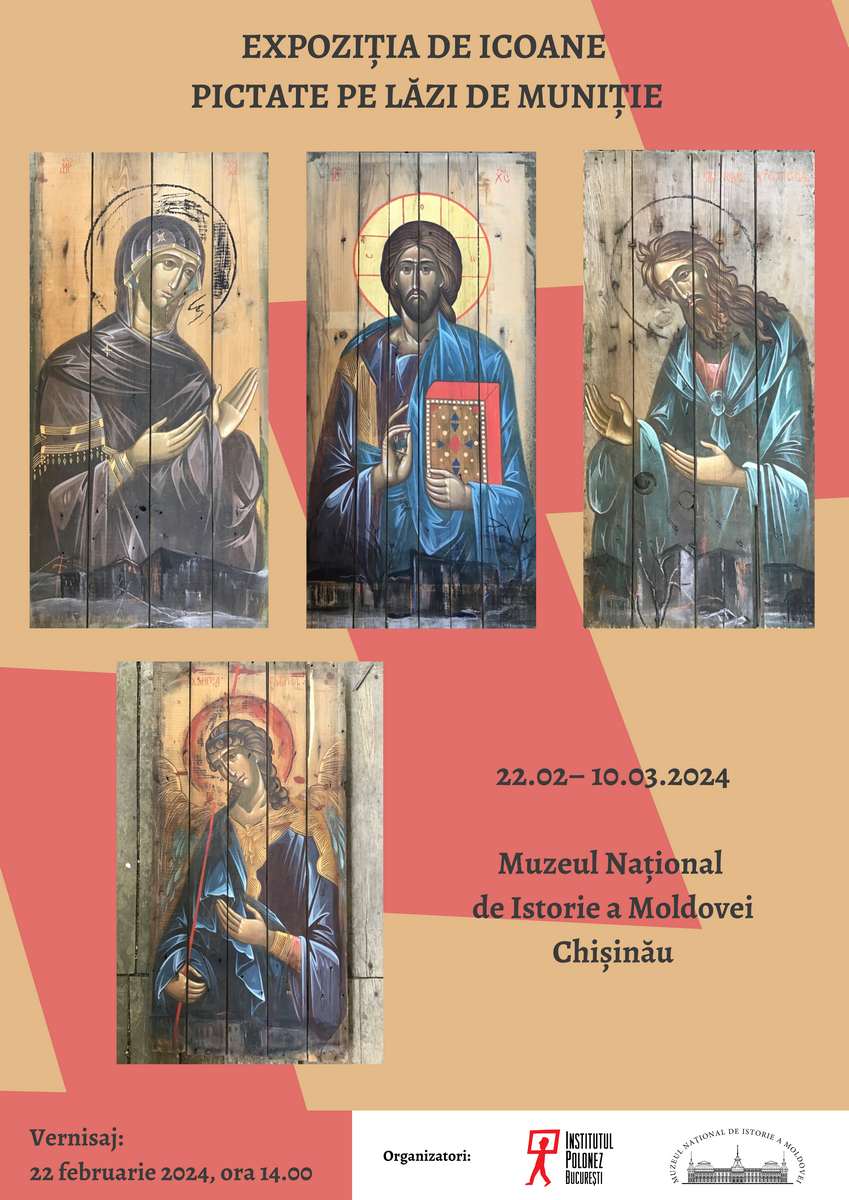 The exhibition "Icons painted on ammo boxes" is organized by the Polish Institute in Bucharest and the National Museum of History of Moldova, in partnership with the Embassy of the Republic of Poland in Chisinau and with the support of the Embassy of Ukraine in the Republic of Moldova.
The exhibition "Icons painted on ammo boxes" is organized by the Polish Institute in Bucharest and the National Museum of History of Moldova, in partnership with the Embassy of the Republic of Poland in Chisinau and with the support of the Embassy of Ukraine in the Republic of Moldova.
The collection presented in Chisinau contains 25 unique icons by Ukrainian artists Olexander Klymenko and Sonia Atlantova, including newer works painted on ammunition boxes used during Russia's current invasion of Ukraine.
The project combines two aspects, at first sight impossible to approach unitarily: the icon and the ammunition box, death and life. "Through our works we want to transform death, the symbol of which is the ammunition box, into life, traditionally symbolized in the Ukrainian icon culture," says Klymenko. In 2014, in response to Russia's first military aggression against Ukraine, Ukrainian artists began painting icons on ammunition boxes. This very original and expressive approach had a very strong impact on the public from the very beginning.
The main goal of the Ukrainian artists is to sell the icons, the amount collected being donated for charitable purposes to the people affected by the war, but especially to come to the aid of the First Voluntary Mobile Hospital in Ukraine, where more than 60,000 people have already been treated since 2014 of patients. According to Klymenko's statements, 97% of the hospital's operating costs were covered from the sale of icons. From the funds obtained from the sale of the works, the artists also support the medical society of the 114th Territorial Defense Brigade and the "Wings of Victory" project, which helps wounded soldiers.
The icons presented in the Chisinau exhibition have traveled around the world, so far being exhibited in 19 countries and in over 150 places, including the European Parliament.
The opening will take place on Thursday, February 22, 2024, at 14.00, in room 1 of the National History Museum of Moldova, which will take place with the participation of the authors of the works. The event is dedicated to the two-year anniversary of the outbreak of Russian aggression against Ukraine.
The exhibition can be visited until March 10, 2024, at the National Museum of History of Moldova, Chisinau, 31 August 1989 street, 121A.
 31 August 1989 St., 121 A, MD 2012, Chisinau, Republic of Moldova
31 August 1989 St., 121 A, MD 2012, Chisinau, Republic of Moldova



















































